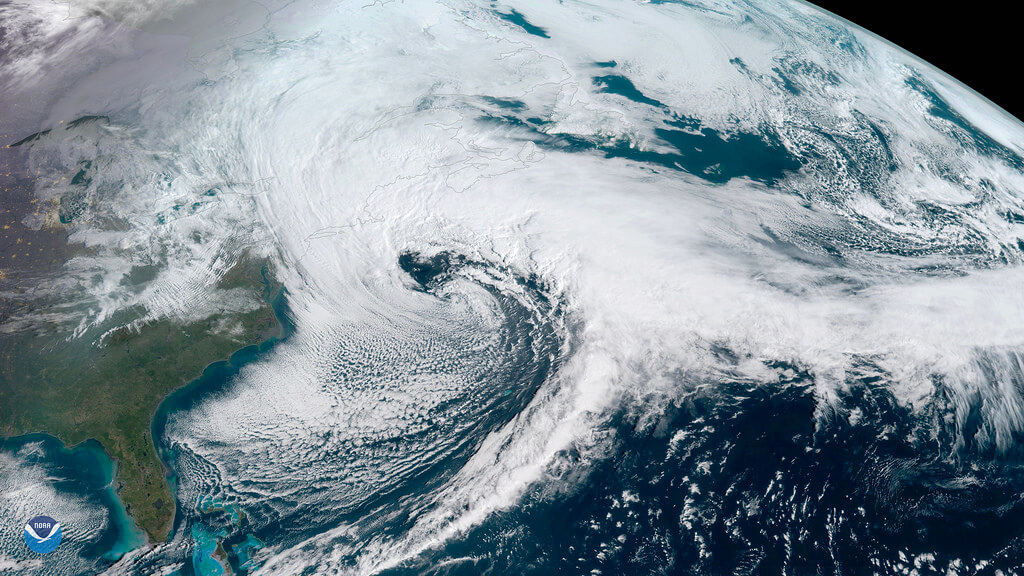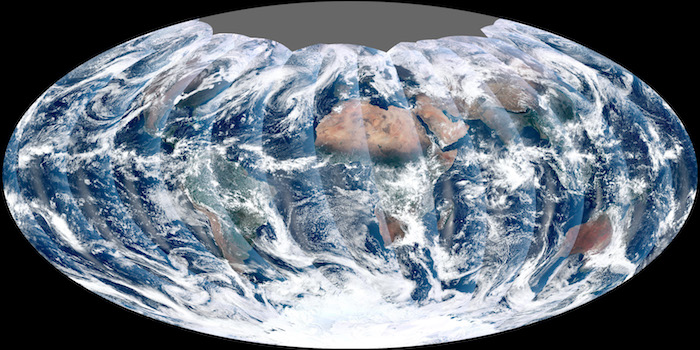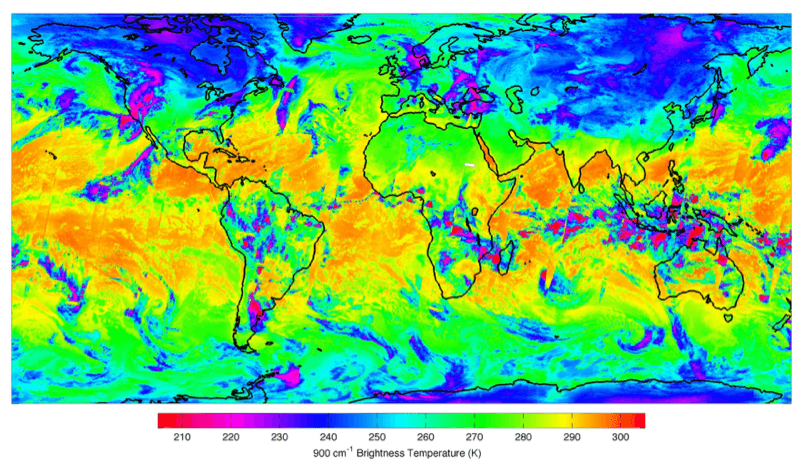
A weather forecast can pretty reliably tell you whether or not you’ll need an umbrella tomorrow. Credit: Public Domain Image
If you want to know what the weather will be like within the next week, a weather forecast can give you a really good idea of what to expect. A seven-day forecast can accurately predict the weather about 80 percent of the time and a five-day forecast can accurately predict the weather approximately 90 percent of the time.
However, a 10-day—or longer—forecast is only right about half the time. Meteorologists use computer programs called weather models to make forecasts. Since we can’t collect data from the future, models have to use estimates and assumptions to predict future weather. The atmosphere is changing all the time, so those estimates are less reliable the further you get into the future.

A seven-day forecast is fairly accurate, but forecasts beyond that range are less reliable.
How Weather Forecasts Are Made
Some of the information needed to make a weather forecast comes from environmental satellites. NOAA, the National Oceanic and Atmospheric Administration, operates three types of environmental satellites that monitor Earth’s weather:
Geostationary satellites: NOAA’s Geostationary Environmental Operational Satellite-R (GOES-R) series satellites orbit approximately 22,000 miles above Earth and they provide a picture of what the weather is like right now. “Geostationary” means that the satellites orbit at the same rate that the Earth rotates. This means they can collect near-continuous images over the same area. Because they focus on one spot, they can provide up-to-the-minute information about severe weather. This information helps forecasters understand how quickly a storm, such as a hurricane, is growing and moving.

An image of a Nor'easter off the coast of New England captured by a NOAA geostationary satellite called GOES-East. Credit: NOAA
Polar-orbiting satellites: Satellites as part of NOAA’s Joint Polar Satellite System (JPSS) orbit approximately 500 miles above Earth. They zip around our planet from pole to pole 14 times per day. Because they orbit while the Earth is rotating below, these satellites can see every part of Earth twice each day. Polar orbiting satellites can monitor the entire Earth’s atmosphere, clouds and oceans at high resolution. By watching these global weather patterns, polar orbiting satellites can help meteorologists accurately predict long-term forecasts—up to 7 days in the future.

Polar orbiting satellites get a complete view of Earth each day by orbiting from pole to pole. Because the Earth spins, the satellite sees a different part of Earth with each orbit. It captures a picture of the entire planet as a series of wedges that then be pieced back together, as in the image above. Credit: NASA’s NPP Land Product Evaluation and Testing Element
Deep space satellite: NOAA’s Deep Space Climate Observatory (DSCOVR) orbits one million miles from Earth. It provides space weather alerts and forecasts while also monitoring the amounts of solar energy absorbed by Earth every day. DSCOVR also makes observations about ozone and aerosols in Earth’s atmosphere. These factors are important in making air quality forecasts.
Polar orbiting satellites provide the information most useful for long-term weather forecasting. These satellites use instruments to measure energy, called radiation, emitted by the Earth and atmosphere. This information is incorporated into weather models, which in turn leads to more accurate weather forecasts. Other instruments can also be used to map sea surface temperature—an important factor in long-term weather forecasting.

Polar orbiting satellites monitor the whole Earth. This map, created with data from a polar orbiting satellite called Suomi-NPP, shows warm sea surface temperatures in orange and cold temperatures and high cloud tops in magenta. This information is important for long-term forecasting. Credit: NOAA
The satellite performs these accurate measurements all around the globe twice per day. This flood of data is what helps weather forecasters to reliably predict the weather up to 7 days in advance. These measurements can also help forecasters predict seasonal weather patterns, such as El Niño and La Niña.
Polar orbiting satellites collect essential information for the models that forecast severe weather like hurricanes, tornadoes and blizzards days in advance. The information they collect is also needed to assess environmental hazards such as droughts, forest fires, poor air quality, and harmful coastal waters.




